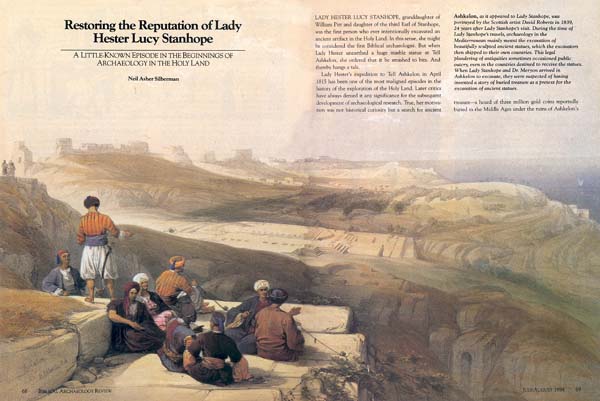
Lady Hester Lucy Stanhope, granddaughter of William Pitt and daughter of the third Earl of Stanhope, was the first person who ever intentionally excavated an ancient artifact in the Holy Land. In this sense, she might be considered the first Biblical archaeologist. But when Lady Hester unearthed a huge marble statue at Tell Ashkelon, she ordered that it be smashed to bits. And thereby hangs a tale.
Lady Hester’s expedition to Tell Ashkelon in April 1815 has been one of the most maligned episodes in the history of the exploration of the Holy Land. Later critics have always denied it any significance for the subsequent development of archaeological research. True, her motivation was not historical curiosity but a search for ancient treasure—a hoard of three million gold coins reportedly buried in the Middle Ages under the ruins of Ashkelon’s famous mosque. It is also true that after two weeks of digging, she did not discover even a trace of gold. But what has really blackened Lady Hester’s reputation among scholars is the violent act of vandalism she committed before leaving the site: She ordered that the dig’s only important find—a huge marble statue—be smashed into “a thousand pieces” and cast into the sea.1 In reality, however, Lady Hester’s act was not as irrational as it may seem, and her excavation at Ashkelon has considerable significance in archaeological history.
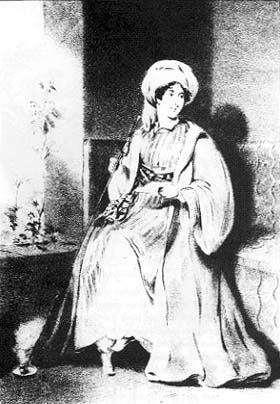
To understand the true historical significance of Lady Hester’s excavation, some basic questions must be asked. What were the circumstances that led her to dig for treasure at Ashkelon? How did her excavation compare to other digs of the time? Why did she destroy the statue? And what did later, 20th-century excavations at Ashkelon reveal? When these questions are answered, Lady Hester will be seen not as a destructive and capricious digger for gold, but as an archaeological explorer far ahead of her time.
Lady Hester Lucy Stanhope was not searching for treasure when she arrived in Palestine in 1812. She had embarked on a royal progress through Turkey, Egypt and the Holy Land, ambitious even by the standards of the age of the Grand Tour. While other European travelers preferred to follow the more well-traveled routes through Greece and Asia Minor, Lady Hester was unafraid to set out to remote locations such as Palmyra and Baalbek, sites to which only a handful of western travelers—all men—had ever dared to go before.
The course of Lady Hester’s travels deserves a study in itself. Supposedly she was encouraged to visit the Holy Land by the famous apocalyptic preacher Richard Brothers, who had determined that according to Biblical prophecy Lady Hester was to be Queen of Jerusalem.2 But whatever her motivation, in a little over two years she visited Gibraltar, Malta, the Ionian Islands, the Peloponnese, Athens, Constantinople, Rhodes, Egypt, Palestine, Lebanon and Syria before finally settling down near Sidon in southern Lebanon.
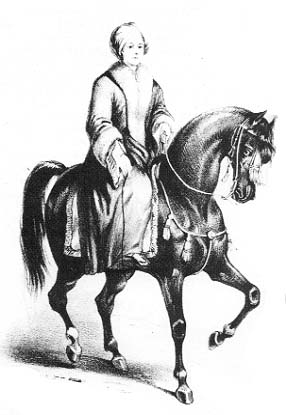
It was there that Lady Hester came into possession of a “curious document” that would change the course of her life.3 It was a medieval Italian manuscript that described the location of fabulous treasures hidden by Christians in cities along the Mediterranean coast. According to Dr. Charles Meryon, Lady Hester’s biographer, this document had been secretly copied by a monk from the records of a monastery somewhere in Syria, the location of which Lady Hester apparently never revealed. It was reportedly found among this person’s private effects after his death and brought to Lady Hester by a resident of one of the nearby villages. These circumstances are certainly mysterious, but there is no doubt that Lady Hester believed the document to be genuine, for tales of the discovery of ancient treasure were then common in Palestine.4
But Lady Hester’s medieval document was much more specific in its details than most. The greatest treasure was reported to be hidden under the ruins of a mosque at the well-known site of Ashkelon, an ancient port city that had lain in ruins, uninhabited, for more than 600 years. Lady Hester saw this as a unique opportunity to add another adventure to her already impressive career. She submitted a request to the Ottoman government for permission to mount an expedition to Tell Ashkelon and to excavate there.
Lady Hester’s proposed excavations were not intended for personal gain; the gold, once discovered, was to become the property of the Ottoman government. Sultan Mahmud’s ministers, then struggling with mounting debts, took this proposal seriously, and immediately dispatched a high official of the Sultan’s household, a Capugi Bashi, to help in the search. The sudden arrival of such a high-ranking official in Lebanon created fear among the local inhabitants that Lady Hester was going to be arrested—or worse. According to Meryon’s information, “a Capugi Bashi never comes into the provinces, unless for some affair of strangling, beheading, confiscation, or imprisonment.” So it is clear that in sending this official, the Ottoman government also fully believed in the authenticity of the treasure document.5
Lady Hester’s expedition was clearly not the capricious treasure hunt that later critics have described. It was, in the words of Dr. Charles Meryon, Lady Hester’s physician and constant attendant as well as her biographer, an enterprise “of a singular and surprising nature,” since the Ottomans had never before given any westerner, much less a woman, official permission to excavate an ancient site in Palestine.
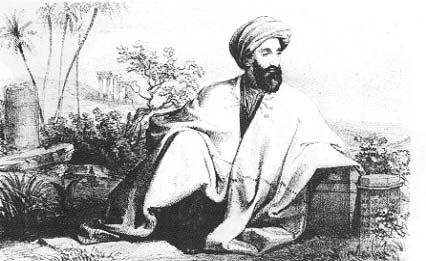
Archaeology in Lady Hester’s time was still in its infancy; J. J. Winckelmann’s landmark History of the Art of Antiquity had been published only 50 years before.6 It was an age of great advancement in art appreciation, but excavation was haphazard and undertaken primarily for the stylistic exemplars it could yield. Recent digs at Aegina and Bassae in Greece, for instance, had reckoned their accomplishments quite mathematically—by the number of crates of ancient statuary they managed to ship home.7
While those western explorers in Greece had little interest in ruins where no massive architecture or statuary were immediately to be seen, Lady Hester’s mission to Ashkelon required that she study the topography and surface features of an otherwise unpromising site. When she and her official entourage arrived at Ashkelon, they were suddenly confronted with the deceptive and confusing appearance of the disturbed and apparently plundered surface of a tell. “All was desolation,” wrote Dr. Meryon, for columns and marble were scattered all over the surface, and numerous holes and trenches were indications of the extensive stone robbing that still seemed to be going on. There were even some rumors among the local inhabitants that the governor of Jaffa, Muhammad Aga, who accompanied the expedition, had been responsible for some of the recent diggings that were apparent on the surface of the tell.8
All that Lady Hester had for guidance was her medieval Italian document, and in one of the earliest uses of textual sources by field archaeologists, she and Meryon identified an area of columns and a semi-circular wall at the center of the mound as the mihrab, or prayer niche, of the mosque where the treasure was said to be buried.
The next step was to excavate the ancient building and to clarify its plan, but this task proved not to be a simple clearance of a single structure, but a complicated archaeological search. Scores of local workers were conscripted, and on the second day of digging, they uncovered lower foundation walls at a depth of three or four feet. Between these buried foundations lay fragments of marble pillars, a Corinthian capital, a faience vessel, and two “small earthen phials.” As the digging proceeded, another foundation was found parallel to the southern wall, seemingly the base of a row of column pedestals, fragments of which were also found. Inside the row of pedestals, at a depth of six or eight feet, Meryon recorded the discovery of an artifact “that might give celebrity to our labors.” This was the famous marble statue that would later be smashed. Though missing its head, it was still colossal—almost seven feet tall.
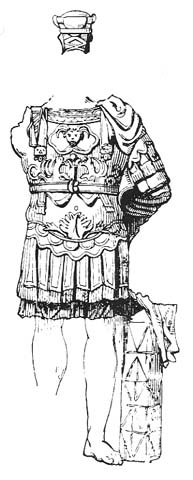
At the same depth as the statue were a marble pavement and some fragments of a triangular pediment of a Corinthian porch. Dr. Meryon, who directed the excavation here, began to recognize the clear evidence that there were several distinct phases in the history of this structure. In what might be rightfully called the first stratigraphical analysis of an archaeological site, he reported that “there was every reason to believe that, in the changes of masters which Ascalon had undergone, the place in which we were now digging had originally been a heathen temple, afterwards a church, and then a mosque.”9 It must be remembered that at the same time in Greece, excavators blissfully ignorant of stratigraphy boasted only of the quantity and artistic quality of their finds.
If the later accounts of the Stanhope excavations are taken literally, the reader might think that the smashing of the statue was Lady Hester’s only achievement. Some accounts have even confused the statue with the treasure, as in The Encyclopedia of Archaeological Excavations in the Holy Land, which states that “her workmen found a huge statue of Zeus, which they smashed, hoping to find treasure inside it.”10 Another modern version is even more outrageously unfair, claiming that she “believed that the chest of the statue contained a great treasure. Before she broke it open, she promised half the booty to the Turkish governor who was with her.”11
The truth is that Lady Hester understood as well as anyone that solid marble statues do not usually contain gold. The value that her statue held was of a more aesthetic kind. The year that Lady Hester dug at Ashkelon, the purchase of the Elgin marbles from Athens was first officially proposed to the House of Commons, and an intense public outcry had ensued.12 Lord Byron in Childe Harold’s Pilgrimage railed against the genteel plunder by his countrymen who roamed the Mediterranean “to rive what Goth and Turk and Time hath spared.“13
The statue dug up by Lady Hester at Ashkelon was therefore a dangerously tempting prize. Though headless and fragmentary, it was the first Greco-Roman artifact ever excavated in the Holy Land, a distinction that even Dr. Meryon recognized. Meryon was overjoyed with this discovery, and he supposed it to be the statue of a “deified king,” perhaps one of the successors of Alexander the Great or even Herod himself.14 But Lady Hester did not share her physician’s antiquarian enthusiasm, for she had a great deal personally at stake. She feared that if she paid too much attention to it, “malicious people might say I came to look for statues for my countrymen, and not for treasures for the [Sublime] Porte,” the customary phrase to describe the palace of the Sultan himself.15
The malicious people to whom Lady Hester was referring probably included the Ottoman governor of Jaffa, Muhammad Aga Abu Nabbut, who resented that he had been ordered by the Sultan and the Pasha of Acre to accompany Lady Hester and follow her commands. Muhammad Aga had been reared as one of the Mamluks of Djazzar Pasha of Acre, and at Djazzar’s death in 1804 he had been granted the district of Jaffa by Djazzar’s successor, Suleiman. Muhammad’s nickname, “Abu Nabbut,” means “Father of the Cudgel,” and it was apparently earned by his uncompromising attitude toward his subjects. He seems to have regarded Ashkelon as his private marble quarry, and even during the course of Lady Hester’s excavation, he shipped freshly dug marble back to Jaffa—substantiating the earlier rumors that even before Lady Hester’s arrival, he had been digging among the ruins himself.
Muhammad Aga suspected that Lady Hester had simply concocted the story of the treasure to dig for relics as so many other English antiquarians were doing.16 Lady Hester, aware of the danger of his hostility, knew that her disposition of the statue would be the ultimate test. If she took the statue away with her, she would be seen as a fraud. If she left it standing on the site, sooner or later some other European would claim it, and she would be implicated in the theft.
So despite Dr. Meryon’s pleadings, she ordered him to proceed to the statue with “half a dozen stout fellows, and break it in a thousand pieces.”17 She had wisely decided that it would be far better if her reputation—not the ancient headless statue—remained intact.
It is strange that the modern condemnations of Lady Hester’s action may be based on the slanderous accusations of Muhammad Aga Abu Nabbut. Dr. Meryon noted that when the governor of Jaffa saw the pile of marble fragments lying scattered on the ground, “he could not conceal his vexation” and apparently invented the story “that the chest of the statue was found full of gold,” half of which Lady Hester secretly gave to Muhammad’s superior, the Pasha of Acre, and half she kept herself.18 The reality, however, is truly ironic; in destroying the statue, Lady Hester had distinguished herself from the archaeological plunderers of her time.
The main object of the expedition, the golden treasure, was never found. Two stone troughs that may have been Roman sarcophagi, which were trapped under fallen columns, were discovered on the west side of the main structure, and there had been expectations that the treasure was inside. When the troughs proved to be empty, “the disappointment was very great.”19 Lady Hester blamed her misfortune on the notorious local tyrant, Djazzar Pasha, who was well-known for his plundering of coastal ruins; she strongly suspected that he had found the treasure some years before.20
There remains one more archaeological footnote to Lady Hester’s career. Leaving Ashkelon and returning north along the coast, she instructed Dr. Meryon to investigate a second place mentioned in the document, about 12 miles northeast of Jaffa on the banks of the Awgy River (today known as the Yarkon River). This site was called el-Khurby, “the Ruins,” and when he got to the site, Meryon concluded that though excavation for treasure here was impractical, “there were many proofs that this district was once highly populous.”21 This observation was amply confirmed more than a century later when the site (Tell Qasile in Hebrew) was excavated by Israeli archaeologists, and another kind of treasure—a Philistine city—was found.22
After that brief excursion, Lady Hester and her entourage continued their homeward journey, finally arriving back at her residence in southern Lebanon. Near Sidon, one last attempt was made to find treasure at a third site mentioned in the document, but with no more success than at the previous two.23 The Capugi Bashi returned to Constantinople, and in the years that followed, Lady Hester turned increasingly toward political pursuits, transforming her residence in Lebanon into a semi-autonomous state.24
Her eccentric behavior became legendary, and her hostility to her own government grew to be an obsession, for she applied repeatedly and unsuccessfully to London for reimbursement for the expedition to Ashkelon, which she believed to be a diplomatic mission of the highest importance.25 Dr. Charles Meryon returned to England and 30 years later, after Lady Hester’s death, published six volumes on her life and career. Although read mainly as a curiosity, his Memoirs and Travels of Lady Hester Stanhope preserved a complete account of the Ashkelon dig.26
It actually took more than a century for Dr. Meryon’s uncannily accurate historical analysis of the excavated structure at Ashkelon to be confirmed. In 1921, the British School of Archaeology at Jerusalem, beginning its own excavations at Ashkelon, was drawn by the very same columns and semi-circular wall that had attracted Lady Hester’s attention 106 years before.27 They likewise discovered “traces of a temple or other public building”28 which they, with the benefit of more modern archaeological techniques, began to dig.
The earliest structure, containing Corinthian columns and a row of pedestals, was dated to the time of Herod, and in this level, the foot and arm of a huge marble statue were found. By 1921, there was a much greater fund of archaeological knowledge than in Lady Hester’s time, and through comparisons with similar Roman structures at Samaria and Gerasa, the British excavators identified it as the “Bouleuterion” or municipal council hall.29 A Late Roman rebuilding above it was noted, and as for the structure’s subsequent history, “a close study of the floor levels and constructive changes over the whole area seems to indicate that the last stage saw one of the famous mosques of Askalon rising upon this historic position.”30
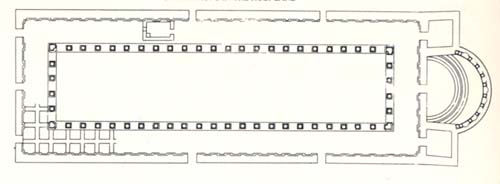
So Lady Hester Stanhope and Dr. Meryon were not so far wrong. They had correctly analyzed the history of the structure at a time when pure archaeological analyses were unknown. Unfortunately, the later excavators did not recognize Lady Hester’s achievements, which Dr. Meryon’s detailed yet overlooked description could have supplied. Professor John Garstang, the director of the later Ashkelon dig, ascribed to Lady Hester only “a number of stout granite columns,” calling her excavation “cursory” and not recognizing that the structure that he himself had excavated was actually hers.31
All that was remembered was the damning and misunderstood anecdote of the fabulous treasure and the smashed statue, though the truth is that Lady Hester’s excavation at Ashkelon, in comparison to other excavations of the early 19th century, was truly ahead of its time. In light of the validation of its basic historical conclusions, Lady Hester Lucy Stanhope’s 1815 expedition to Ashkelon might be rightfully called the first modern excavation in the history of archaeological exploration of the Holy Land.
MLA Citation
Endnotes
The primary source of information about the purpose, plan and progress of the Ashkelon dig is the account written by Lady Hester’s personal physician, Charles Lewis Meryon, The Travels of Lady Hester Stanhope (London, 1846), Vol. 3, pp. 86–187.
Subsidiary details have been provided by: James Silk Buckingham, Travels Among the Arab Tribes (London, 1825); Charles Irby and James Mangles, Travels in Egypt, Nubia, Syria, and Asia Minor (London, 1823); T.R. Joliffe, Letters from Palestine (London, 1854); and Charles Meryon’s other three-volume work, The Memoirs of Lady Hester Stanhope (London, 1846).
The best biography of Lady Hester is Lady Hester Lucy Stanhope by Frank Hamel (London, 1913). For a brief account of Lady Hester’s expedition and for the background of Biblical exploration in the early decades of the 19th century, see the author’s Digging for God and Country: Exploration, Archaeology and the Secret Struggle for the Holy Land, 1799–1917 (New York, 1982), Chapter 3.
Such discoveries were known at least as early as the Middle Ages. For a report of an ancient hoard of coins discovered by Crusaders at Athlit in 1218, cf. C. N. Johns, Quarterly of the Department of Antiquities in Palestine 2 (1932), p. 41. In 1660, the Ottoman governor of Gaza, Hussein Pasha, conducted some excavations at the traditional site of the “Temple of Dagon” and discovered a porphyry bust with eyes of crystal, cf. Martin A. Meyer, History of the City of Gaza (New York, 1907), p. 99. Meryon goes to great length to justify the belief in buried treasure in Palestine, cf. Travels, Vol. 3, pp. 87–90.
For the history of antiquarianism and the early development of classical archaeology, see Glyn Daniel, A Hundred and Fifty Years of Archaeology, pp. 16–21.
Cf. Fani-Maria Tsigakou, The Rediscovery of Greece (New Rochelle, New York, 1981), pp. 22–3, and William St. Clair, Lord Elgin and the Marbles (New York, 1967), pp. 203–4.
See Meryon, Travels, Vol. 3, pp. 156ff., for a description of the subsequent course of the excavation.
Michael Avi-Yonah, ed., Encyclopedia of Archaeological Excavations in the Holy Land (London, 1975) Vol. I, p. 121.
Lord Byron, Childe Harold’s Pilgrimage, ed. John D. Jump (London 1975), p. 38. Lady Hester met Byron during her visit to Athens in 1812, but it seems each of them gained a negative impression of the other. Cf. Meryon, Memoirs, Vol. 3, pp. 218–9, and “Famous in My Time”: Byron’s Letters and Journals, ed. Leslie A. Marchand (London, 1973), Vol. 2, p. 21.
Meryon, Travels, Vol. 3, p. 163. On Muhammad Aga’s later perfidy against Suleiman, cf. Ibid., pp. 180–1.
For the identification and summary of the excavations, cf. Avi-Yonah, Encylopedia of Archaeological Excavations in the Holy Land, Vol. 4, pp. 963ff. For the Arabic name of the site, cf. Benjamin Mazar, “The Excavations at Tell Qasile,” Israel Exploration Journal 2, (1950–51), p. 62, n. 3.
The best description of Lady Hester’s later behavior and strange preoccupations can be found in Alexander Kinglake, Eothen (London 1844), pp. 111–149.
John Garstang, “The Fund’s Excavation of Askalon,” Palestine Exploration Fund Quarterly Statement [PEFQSt] January 1921, p. 12.

